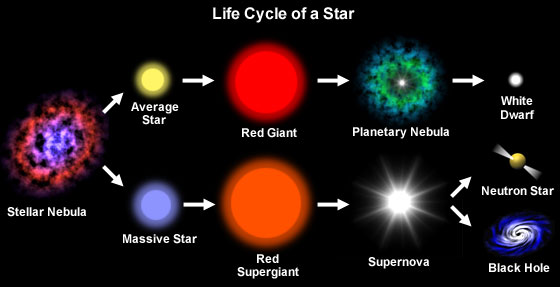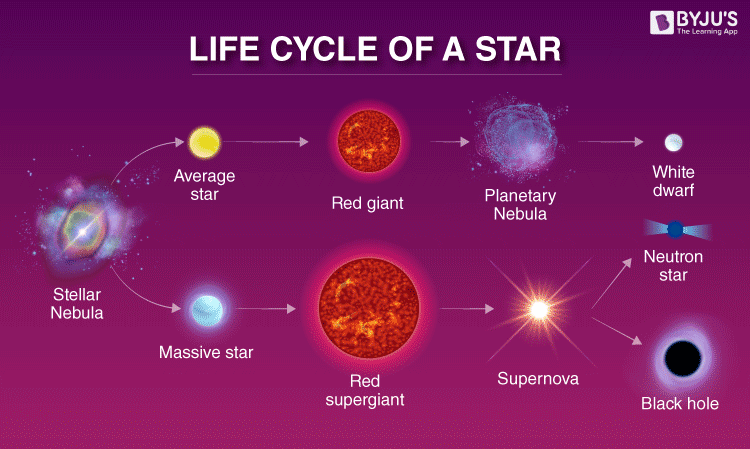
Exploring the Life Cycle of a Typical Star: From Birth to Stellar Death
In the vast expanse of the cosmos, stars are the celestial bodies that illuminate the universe and shape the galaxies. These luminous objects follow a remarkable life cycle, dictated by the interplay between gravity, nuclear fusion, and their own mass. The journey of a star from its birth to its eventual demise is a cosmic spectacle that has fascinated astronomers for generations. In this comprehensive article, we will embark on a journey to understand the life cycle of a typical star, from its inception to its dramatic end.
Birth: The Stellar Nursery
1. Molecular Clouds and Star Formation
The life cycle of a star begins within vast regions of space known as molecular clouds. These clouds are composed of dust and gas, primarily hydrogen and helium. Gravitational forces within these clouds can cause regions to collapse, forming dense cores.
2. Protostar Formation
Within these cores, the gas and dust continue to collapse, leading to the birth of a protostar. As the protostar contracts, it heats up and begins to glow, although it is not yet a full-fledged star. This early phase can last tens of thousands of years.
3. Main Sequence Star
Once the core temperature of the protostar reaches about 15 million degrees Celsius (27 million degrees Fahrenheit), nuclear fusion begins. Hydrogen atoms in the core combine to form helium through a process known as nuclear fusion. This marks the birth of a main sequence star—the phase during which a star spends the majority of its life.
Adulthood: The Stable Main Sequence
1. Hydrogen Fusion
For stars like our Sun, the main sequence phase is relatively stable, with hydrogen fusion occurring in the core. This process releases tremendous amounts of energy in the form of light and heat, providing the star with its radiant glow.
2. Stellar Balance
Throughout the main sequence phase, a star remains in a delicate balance between the inward force of gravity, which tries to compress the star, and the outward force of radiation pressure, generated by nuclear fusion, which pushes outward. This balance determines the star’s size, luminosity, and temperature.
3. Stellar Evolution
A star’s evolution on the main sequence is primarily determined by its mass. Higher-mass stars burn through their hydrogen fuel more quickly and exhibit shorter main sequence lifetimes, while lower-mass stars, like red dwarfs, can remain on the main sequence for billions of years.
Old Age: Stellar Changes and Variability
1. Hydrogen Depletion
As a star consumes its hydrogen fuel, the core begins to shrink and heat up. This leads to changes in the star’s structure and properties. The outer layers may expand, causing the star to become a red giant or supergiant.
2. Helium Fusion
In stars with sufficient mass (around 0.4 times the mass of the Sun or greater), helium fusion begins in the core once hydrogen is depleted. This process continues, with heavier elements fusing in subsequent stages, leading to the production of elements like carbon, oxygen, and even iron.
Death: Stellar Endings
1. Supernova (High-Mass Stars)
High-mass stars, which are at least eight times more massive than the Sun, end their lives in a spectacular explosion called a supernova. This explosion releases an incredible amount of energy, briefly outshining an entire galaxy.
2. Neutron Star or Black Hole Formation (High-Mass Stars)
The core of a high-mass star may collapse further after a supernova, forming either a neutron star or, if the mass is high enough, a black hole. Neutron stars are incredibly dense and spin rapidly, emitting beams of radiation observable as pulsars.
3. Planetary Nebula and White Dwarf (Low-Mass Stars)
Low-mass stars, such as our Sun, follow a different path. They expand into red giants and eventually expel their outer layers, creating a colorful shell of gas known as a planetary nebula. The remaining core contracts to become a white dwarf—a dense, Earth-sized remnant composed mainly of carbon and oxygen.
4. Cooling and Fading (White Dwarfs)
Over billions of years, white dwarfs gradually cool and fade, becoming dimmer and less luminous. They eventually become cold, dark objects known as black dwarfs, although none have yet reached this stage due to the universe’s age.
Conclusion
The life cycle of a typical star is a remarkable journey spanning billions of years, from the birth of a protostar in a molecular cloud to the dazzling end as a supernova or the gradual cooling into a white dwarf. The diversity in star size and mass leads to a wide range of outcomes, each contributing to the rich tapestry of our universe. Studying the life cycles of stars not only deepens our understanding of the cosmos but also sheds light on the origin of elements, including those essential for life on Earth. It’s a reminder of the profound connection between the stars above and the atoms within us.


